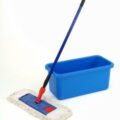Going to college, or even taking a single class, can result in financial stress. This is especially true when hidden expenses, such as textbooks and lab supplies, start to add up. The frugal person will look for ways to pare down expenses so they can stay within budget while continuing with their education. There are a variety of ways to save money or add to one’s cash flow while taking college courses.
These tops nine ways will result in money saved that can be allocated toward other school-related or living expenses.
Ways to Save Money on Textbooks
A savings of a few dollars can add up over the course of the school year.
- Purchase Textbooks Secondhand. Unless a brand-new edition has been released, there’s really no reason to buy new textbooks. Used textbooks can be purchased at on-campus bookstores, online bookstores, or other book retailers. Often the price is one-half to two-thirds the price of the new version.
- Sell Back Textbooks for Credit. Always sell textbooks back to the campus bookstore once the class is over to replenish the book-buying budget.
- Increase the Budget by Getting Rid of Unwanted Items. Everyone has something lying around the house they can sell to raise extra cash.
- Share Textbooks. If one student’s schedule jives with another’s, it might be possible to save money by sharing textbooks. Consider study and class schedules to make sure this will work.
- Consider Textbook Rental. Some companies rent textbooks that students can use for the duration of the class, and then return when it’s completed.
- Opt for E-Book Versions. The face of publishing is rapidly changing, and even some textbooks are now available in e-book version. In addition to saving the student money, e-book textbooks also save space and are eco-friendly.
- Buy Online. There are many places to buy textbooks – new and used – online. Peruse sites such as eBay or Amazon, or search through a college campus’s online bookstore to see if they have any internet specials.
- Look for International Versions. Some international companies publish their own version of US-based textbooks and sell them at a lesser price. When going this route, make sure the cost of shipping doesn’t negate the amount of savings.
- Don’t Forget the Library. The public library shouldn’t be overlooked as a savings source when it comes to textbooks. Those going this route will have to get a hold of the book early, or find out what the lending policy is on a book that will likely be highly sought after once classes begin.
Saving money on textbooks can make the difference between happiness and hunger.
Budget the Savings Accrued
When the budget is tight, it can be tempting to spend textbook savings on a night out with friends, new clothes, or a delicious meal at a favorite restaurant. It’s okay to indulge a little, but only do so after determining where the savings needs to be allocated. If other school supplies are needed or the dorm room refrigerator is empty, it’s better to use that money you’ve saved on the things you really need.
Try to put save some dough that you save on textbooks aside so there’s a small nest egg available in the event that gas, groceries, or other small necessities must be purchased.
~~~~~~~
written by: Mary Ylisela





